June – August
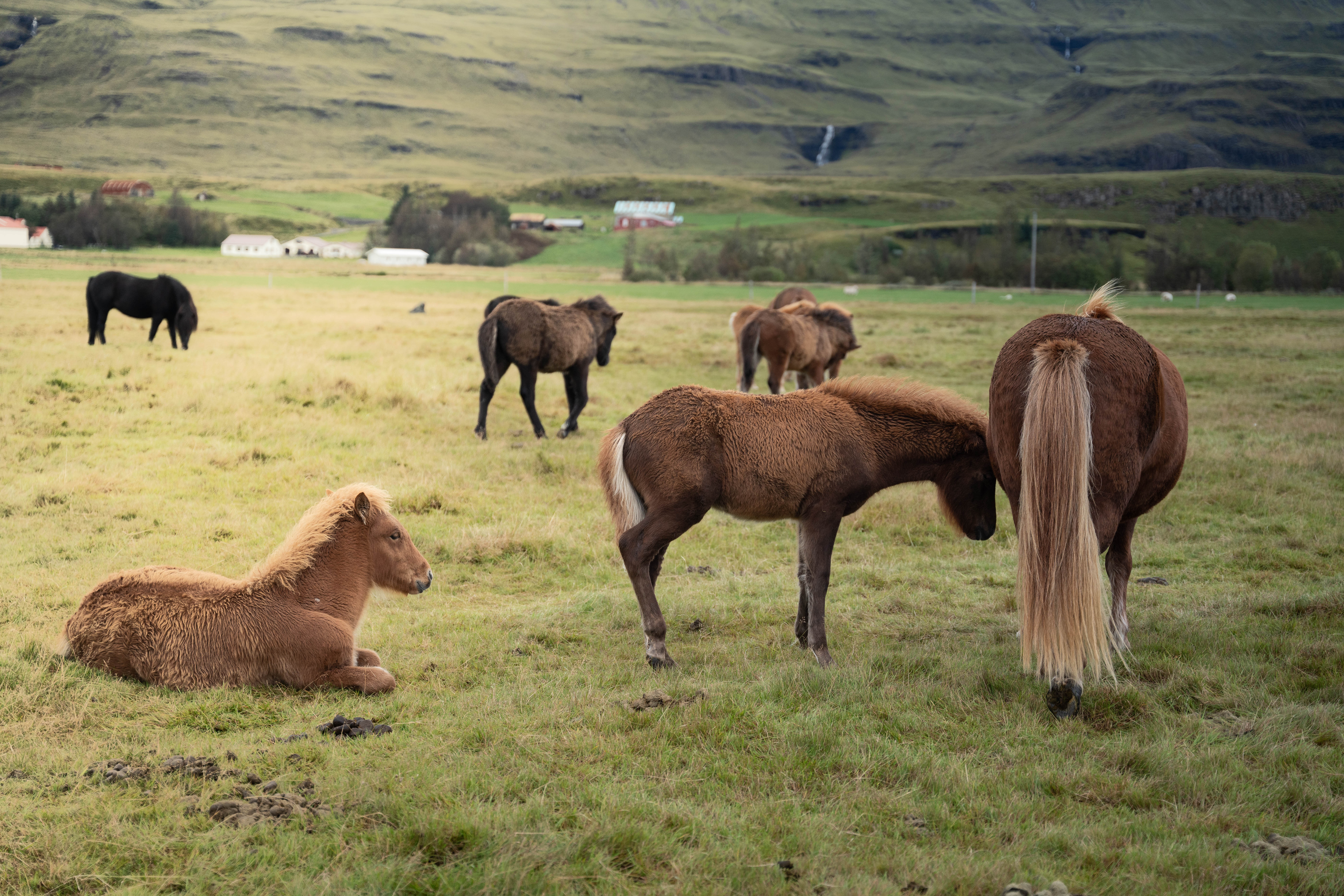
So is there a best time to visit Iceland?! Well, I first went to Iceland few years back in the summer. While the sun shone almost everyday, it was also definitely windy and cold. I recently went back to Iceland in September and it was realllly cold! It also snowed, and hailed. But typically I would recommend summer (June to August) as the best time to visit Iceland, thanks to the midnight sun and warmer temperatures. If you’re into hiking like me, you can be assured that during July and August especially, all the trails will be open.
May – September
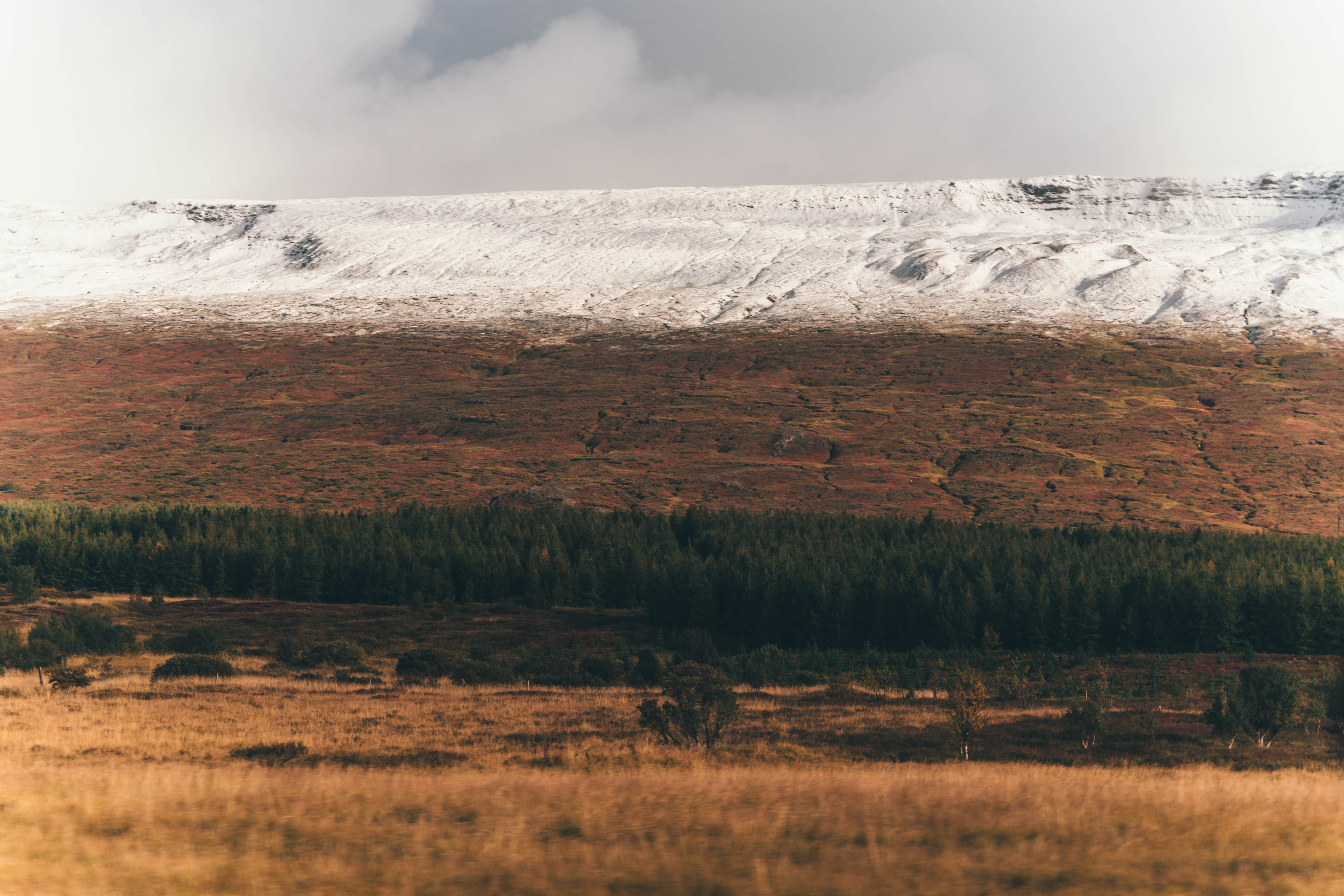
May to September is also the best time to visit Iceland thanks to the whales. Whale watching can be quite spectacular in this area, although to be honest, all I saw were dolphins! I would probably recommend September as the very last month that you can somewhat safely and comfortably road trip around the country. Expect to be hit with snowy and rainy days, but the sun can still shine and the incoming autumn season can be delightful to photograph.
Winter
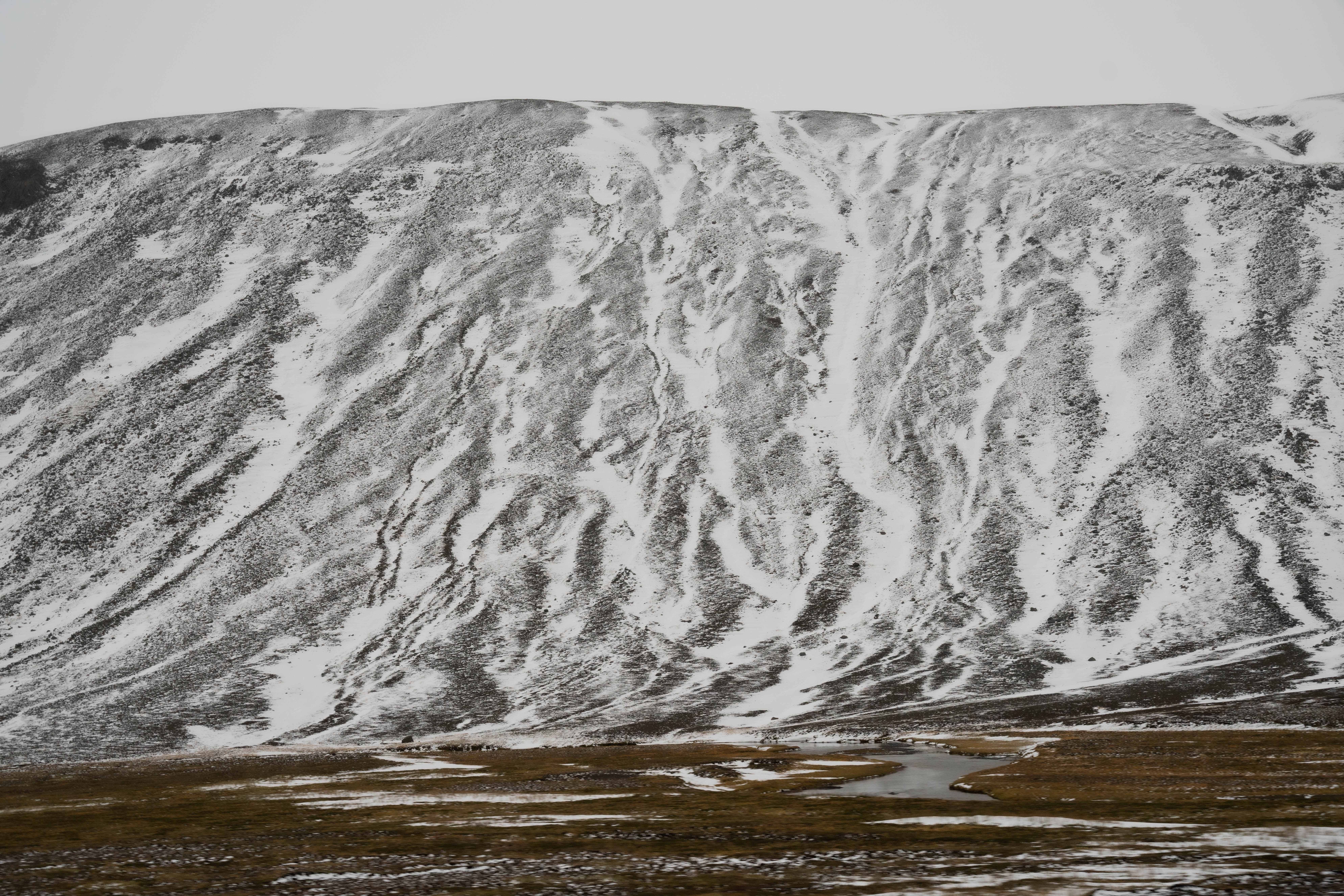
Winter in Iceland (November-March) can be brutal and road closures make access to some areas difficult but offer a better chance at seeing the Northern Lights. You can combine orca watching with the Northern Lights in February and March.
Best Time to Visit Iceland for Northern Lights
March and September are the best time to visit Iceland, for seeing the Northern Lights. That’s all down to the equinoxes – the meteorological turning of the seasons, when geomagnetic storms in the Earth’s magnetic field double in frequency. These disturbances are what cause the Northern Lights, so twice the activity means twice the chance of seeing the aurora borealis. While I was in Iceland this past September and I did catch the northern lights very faintly, I wasn’t lucky to see the full blast of these lights unfortunately!
Jan – Feb
January and February are also great months to see the Northern Lights. January is one of the quietest times to visit Iceland, with far fewer tourists meaning uncrowded main sites. You will experience short, dark days, with the sun rising around 11am and setting about 4pm.
Read on for what to see during summer, one of the best times to visit Iceland if you’re looking for the midnight sun and endless days of sunshine!
Iceland Itinerary
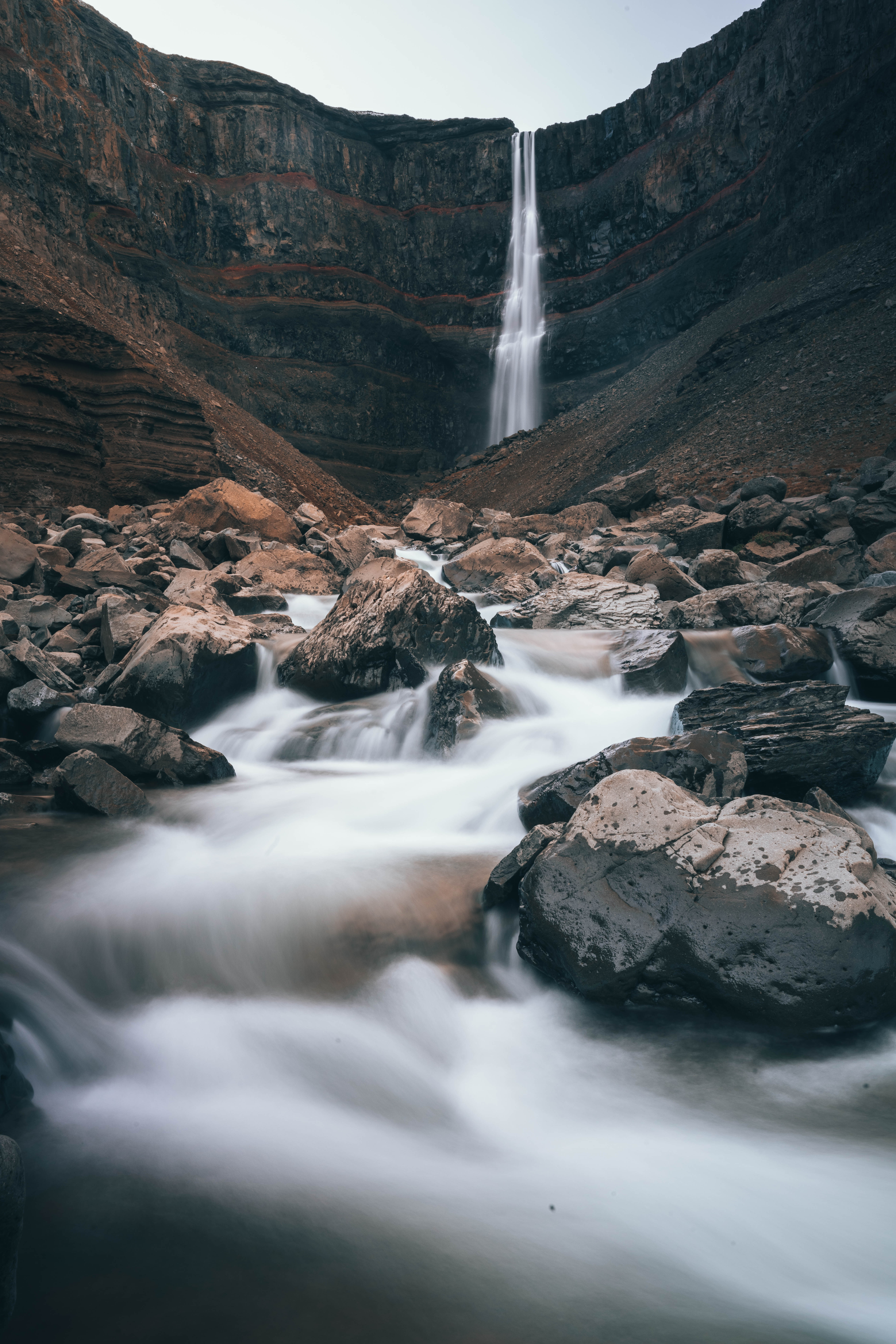
Sky Lagoon:
Reykjavík Airport is the main airport serving Reykjavik, the capital of Iceland. Once we picked up our Iceland campervan rental we set out for the north coast of Iceland’s Snæfellsnes peninsula, near the town of Grundarfjörður. But first, after that 10 hour flight, a soak in the Sky Lagoon is highly recommended. By appointment only, the hot and cold pools here are divine. I would say it’s even better than the Blue Lagoon.
Kirkjufell Mountain:
After driving for a few hours, we ended up in Grundarfjörður just in time to catch sunset at the Kirkjufell mountain and waterfalls. The main attraction here is Kirkjufell, which is a 463 m high mountain. Photographing sunset and sunrise here was my main mission, although with the intermittent rain and heavy winds, it made it very challenging to grab a photo I could be proud of! The scenery is absolutely stunning and the waterfalls is beautiful. There is no hike involved here, just a short walk to the falls from the carpark. After camping nearby at a campsite in our Iceland campervan rental, we had a quick breakfast of porridge, before setting out on our road trip to the little fishing village of Akureyri.
Akureyri:
In Akureyri, you can see numerous sights as day trips like the Myvatn region, Dettifoss waterfall, Godafoss waterfall, and Asbyrgi canyon. On my previous trip, I spent a night in Akureyri so I could go whale watching. From time to time bottlenose whales, humpbacks and mink whales have even been seen deep in Eyjafjörður, even right in front of Akureyri. Several companies in the north specialize in whale watching. On the way to Akureyri we stopped off at an off the beaten path waterfalls called Benefoss. Wild and empty, it made for a beautiful stop in our Iceland campervan rental. PS: Check out the outdoor toilet and hot spring shower from geothermal power at the Krafla volcano near Lake Myvatn, Iceland below. Here are the coordinates to this shower: 65.681121, -16.775351.
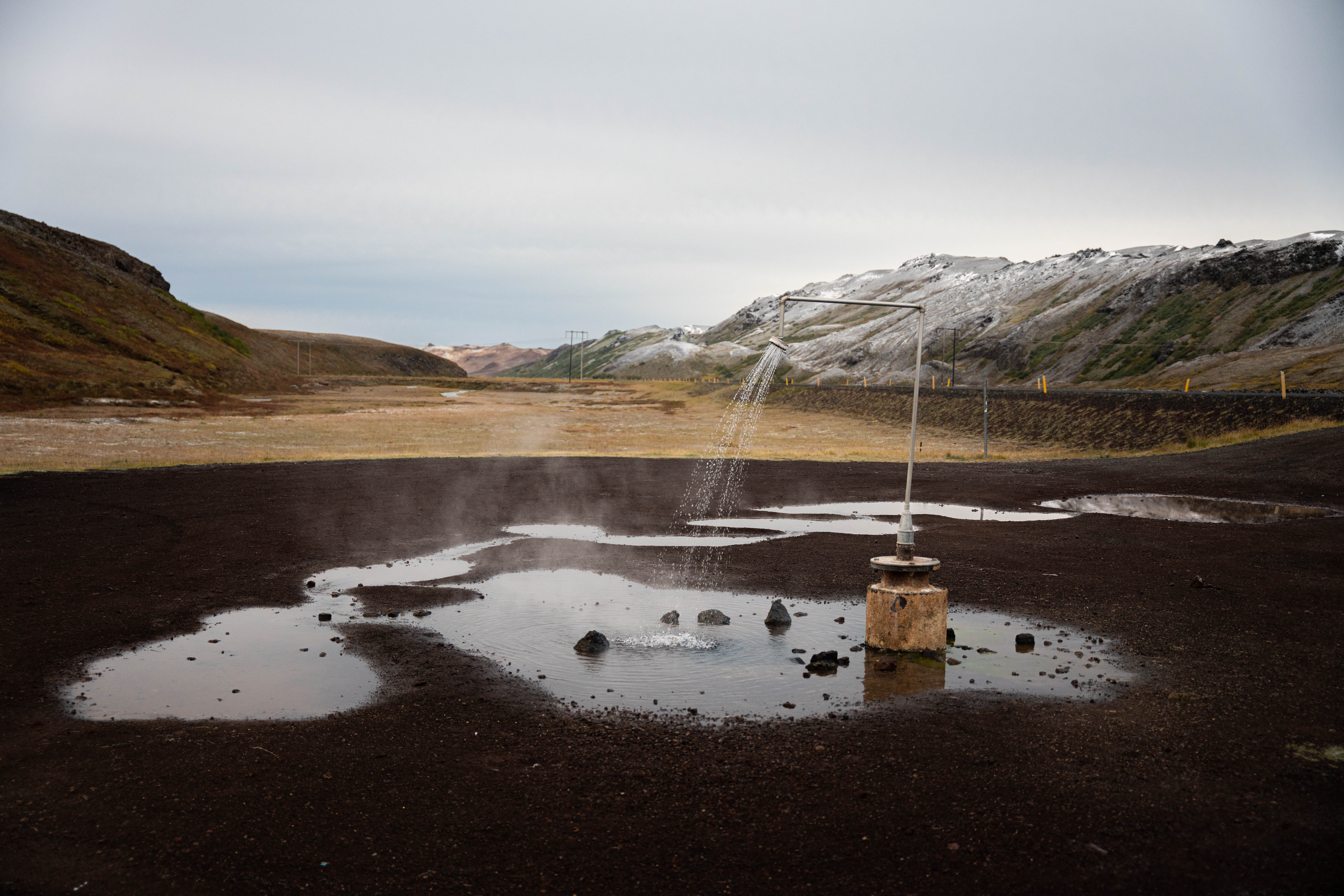
Godafoss
On the way to our campsite for the night, we stopped at Godafoss. It’s located along the country’s main ring road and is one of Iceland’s most beloved falls. You don’t have to hike to see these falls, but they can be viewed from both banks of the river.
- West bank (right side when facing the waterfall) – views right from the carpark – can get closer on the rocks, but be careful it is slippery. Best side to see the middle flow
- East Bank (left) – short 5 /10 minute walk along the river bank with various views of the waterfall
We proceeded to the campsite that night about 15 minutes away from these falls after we realized sunset wasn’t going to happen due to the overcast clouds! The campsite also had an indoors cooking area plus restrooms so we took advantage of the indoor stoves to cook an elaborate pasta meal! We went back to the falls the next day morning to witness an incredible sunrise. Post sunrise we sat in our Iceland campervan rental with glacier views and consumed our porridge brekkie, convinced this was the best time to visit Iceland!
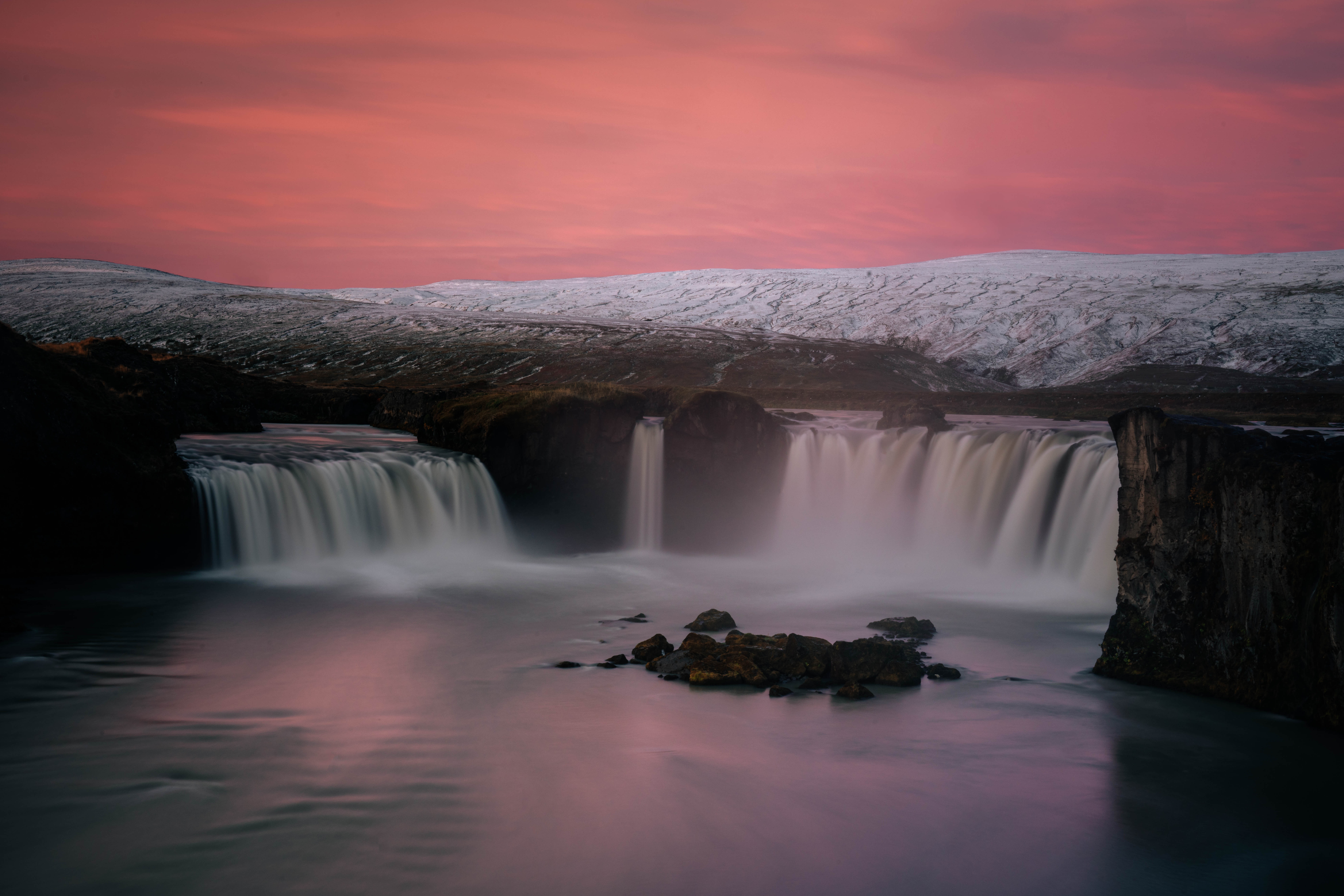
Dettifoss:
From Godafoss, we made our way past the Hverir Mud pools (don’t miss stopping here, it’s quite fascinating to wander around) to the Krafla Viti crater. Filled with blue water, it’s surrounded by a geothermal area and colorful mountains. The drive itself felt other worldly!
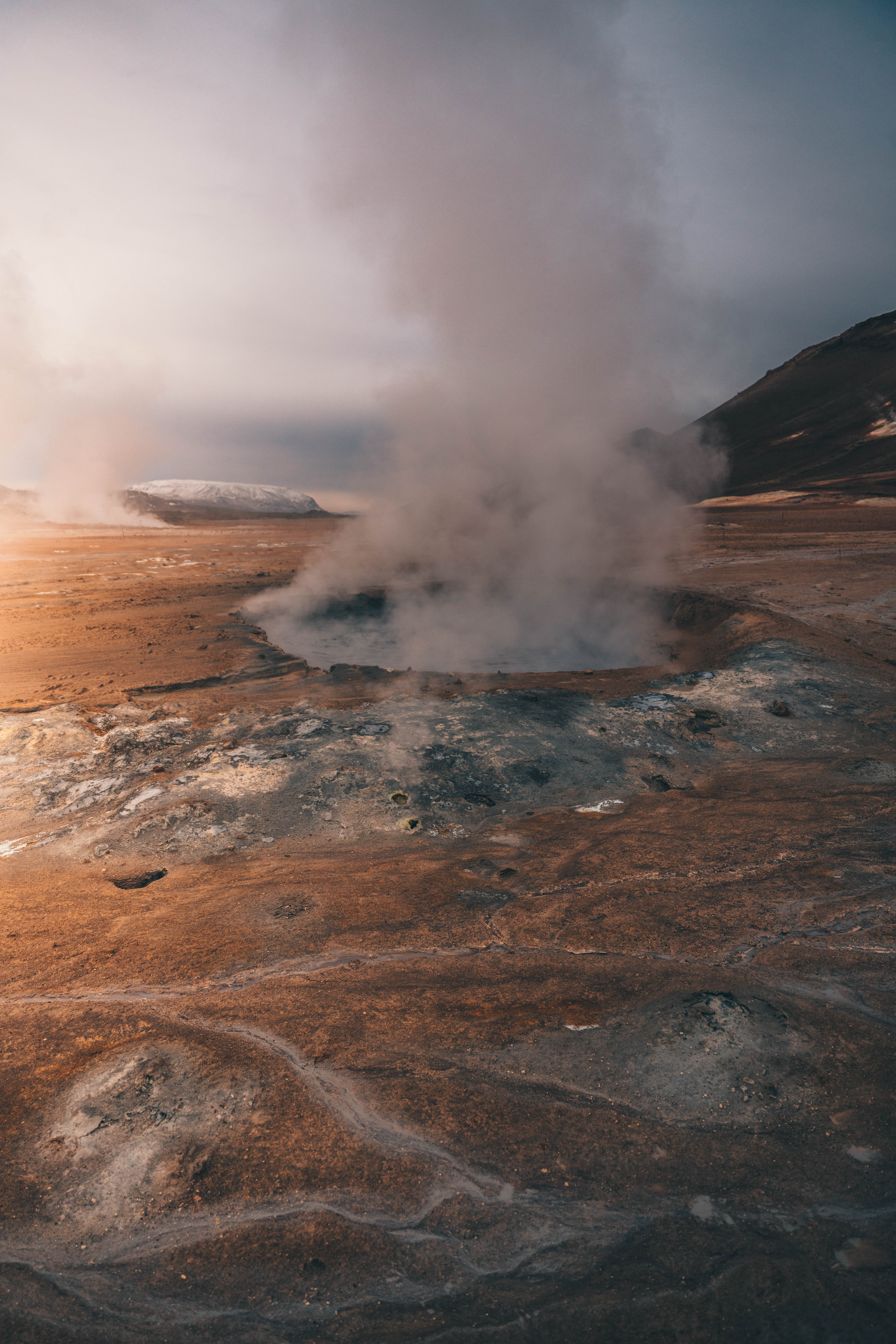
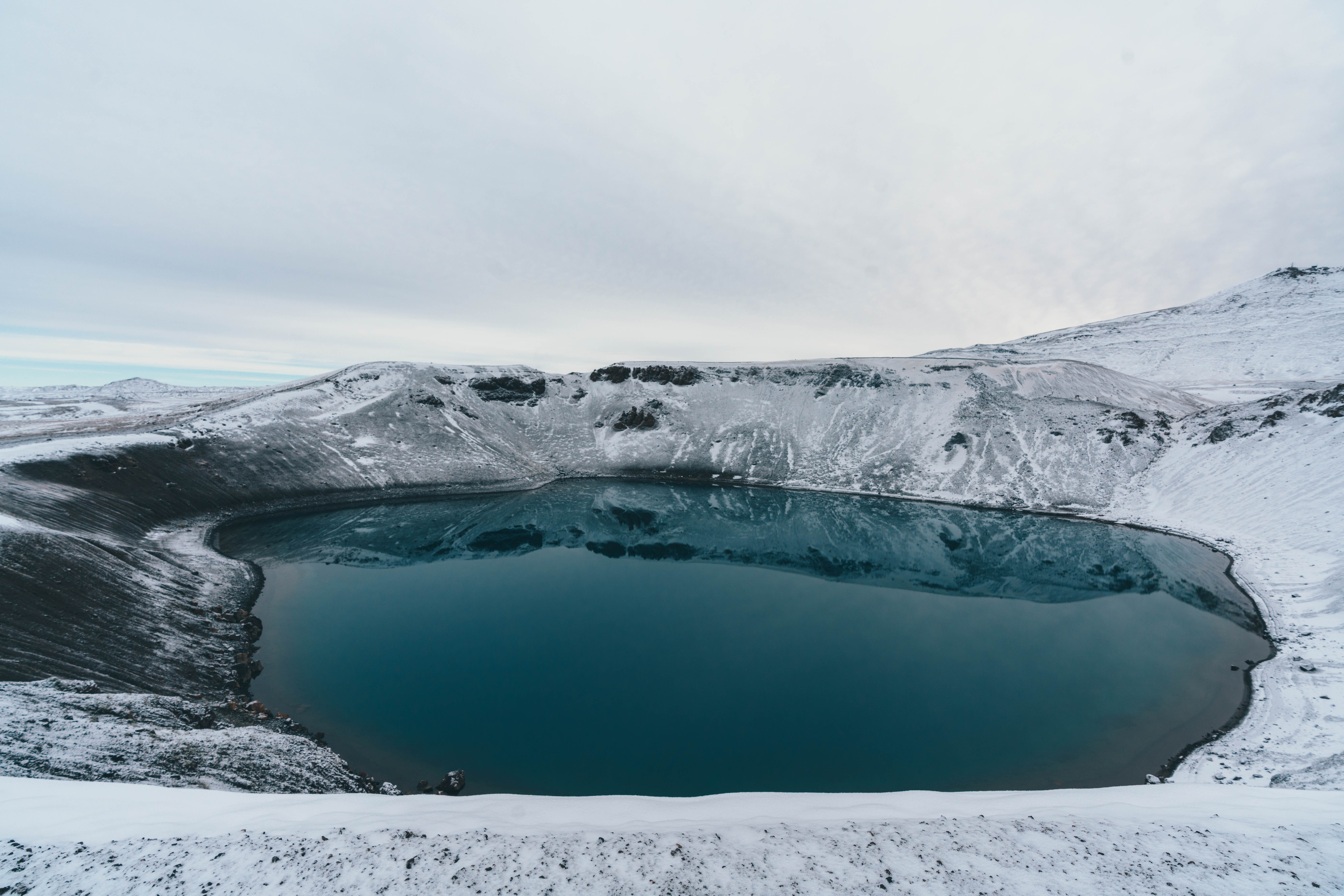
From here, we made our way to one of Europe’s most powerful waterfall, Dettifoss! Dettifoss is a waterfall in Vatnajökull National Park in Northeast Iceland, and is reputed to be the second most powerful waterfall in Europe. From the parking lot, walk about 10 minutes toward the falls, following a steep, rocky trail. There are two sides from which you could see these falls. I’ve seen them from both sides and both are spectacular. Tip: From the east side, it is possible to get right up to the falls.
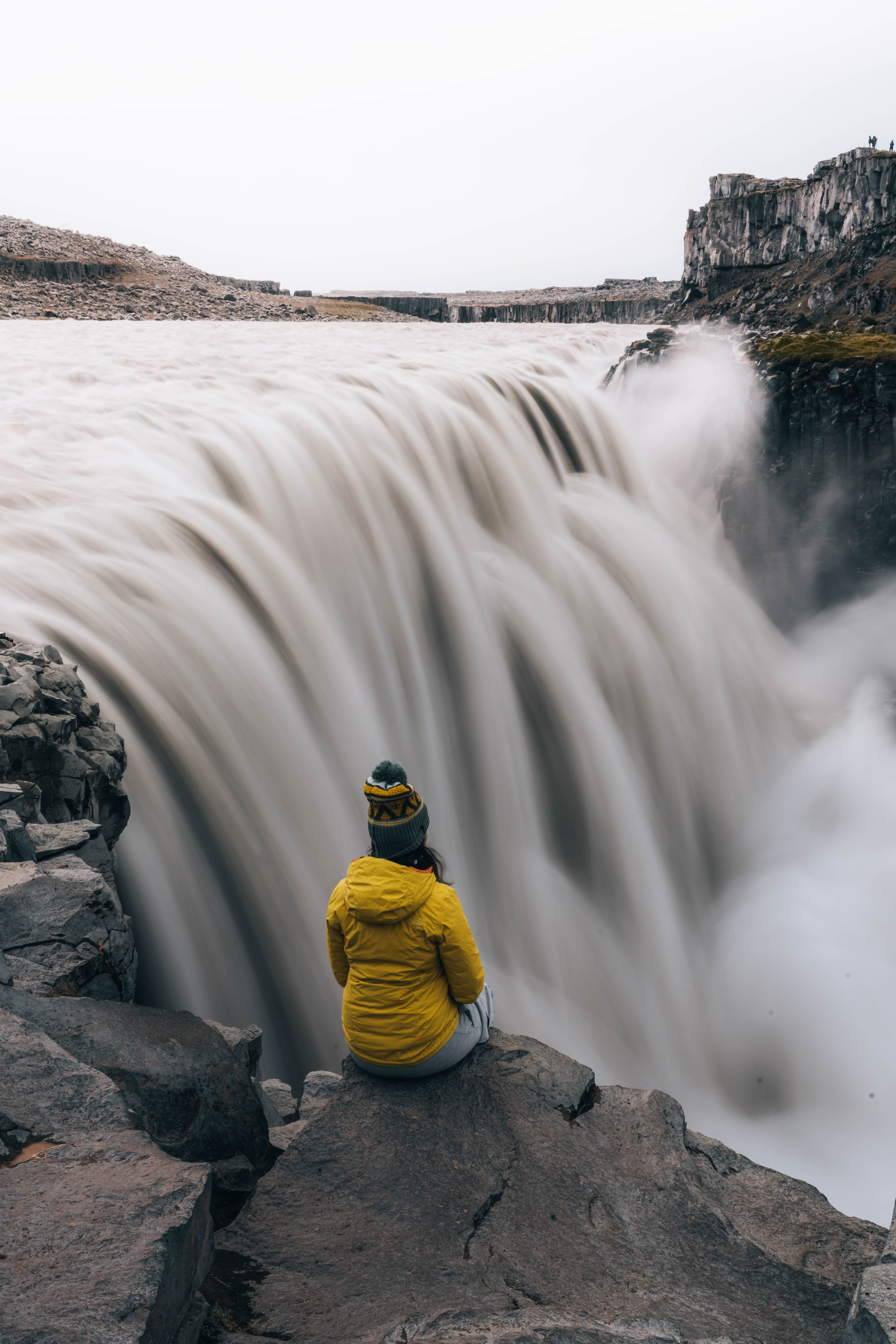
Stuðlagil Canyon
From Dettifoss we drove to Stuðlagil Canyon in our Iceland campervan rental. With the largest number of basalt rock columns in Iceland and a stunning blue glacier river to contrast, Stuðlagil is one of Iceland’s hidden gems. There are two ways to see canyon. To get down to the water, you must park and walk 4km one way. After a short journey on road 923, you will begin to see the opening to the lower part of Jökuldalur and the turn off for Jökuldalsvegur.
Here you can see a beautiful basalt column waterfall called Stuðlafoss. If you have a 4×4, you may be able to drive further down Jökuldalsvegur but we would recommend parking your car in the parking lot and taking the walk toward the waterfall and all the way until you come to the columns. When we got to this location, we definitely felt September was not the best time to visit Iceland because it had begun snowing and the visibility was very low. Hence, instead of seeing the blue glacier river we saw the picture below! By the time we left, it was already late and we headed for our campsite at Eglisstadir in the middle of the cold rainy weather.
Hengifoss Waterfalls
Next day we woke up and decided to go on a hike to see the Hengifoss waterfalls. The third highest waterfall in Iceland, this one is eye-catching due to the striking red clay and black basalt patterns of the cliff face that make a pretty backdrop for the narrow ribbon of water cascading down. The hike is 1.2mi one way but quite steep on the way up. Tip: There is a proper parking lot when you nav to these falls.
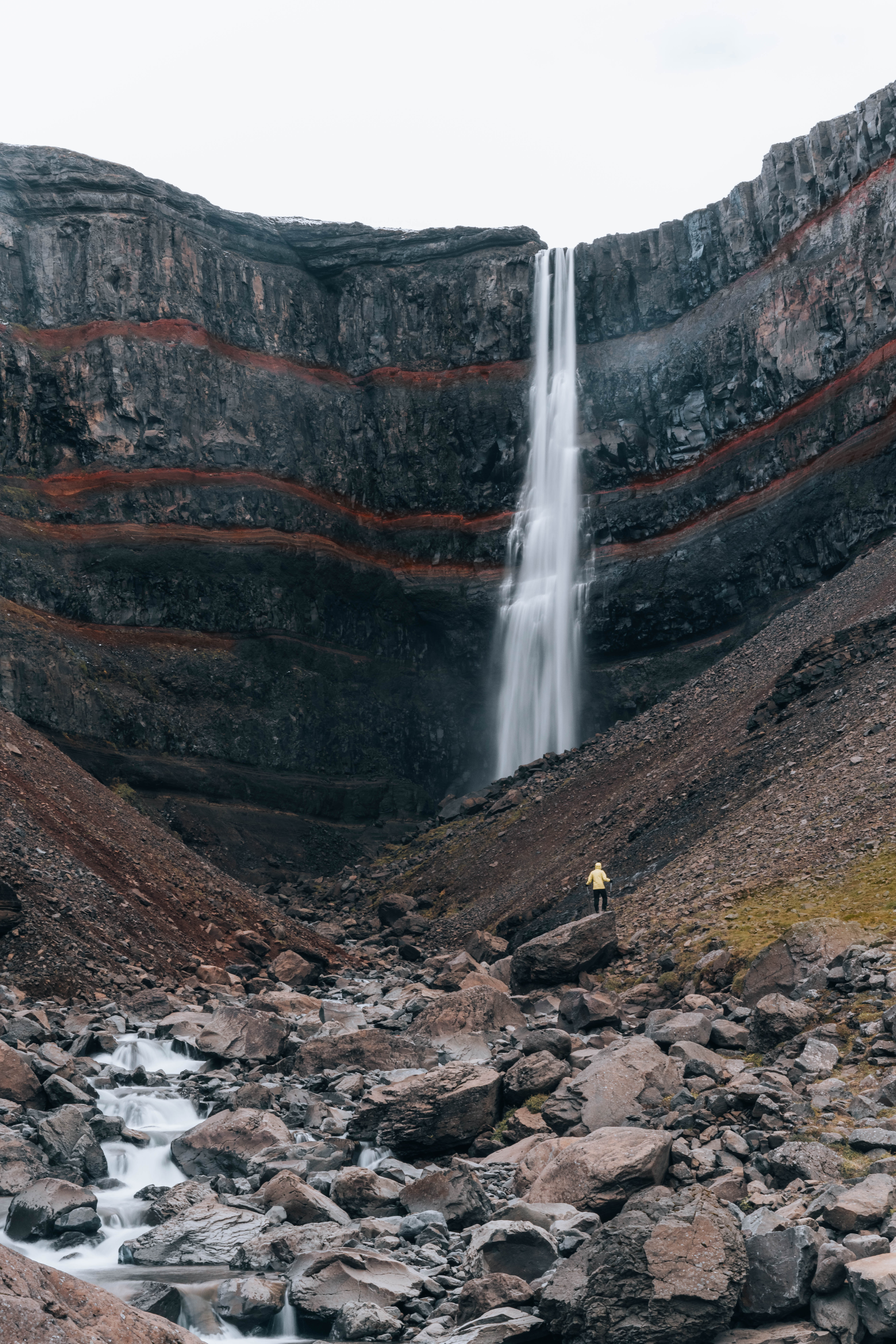
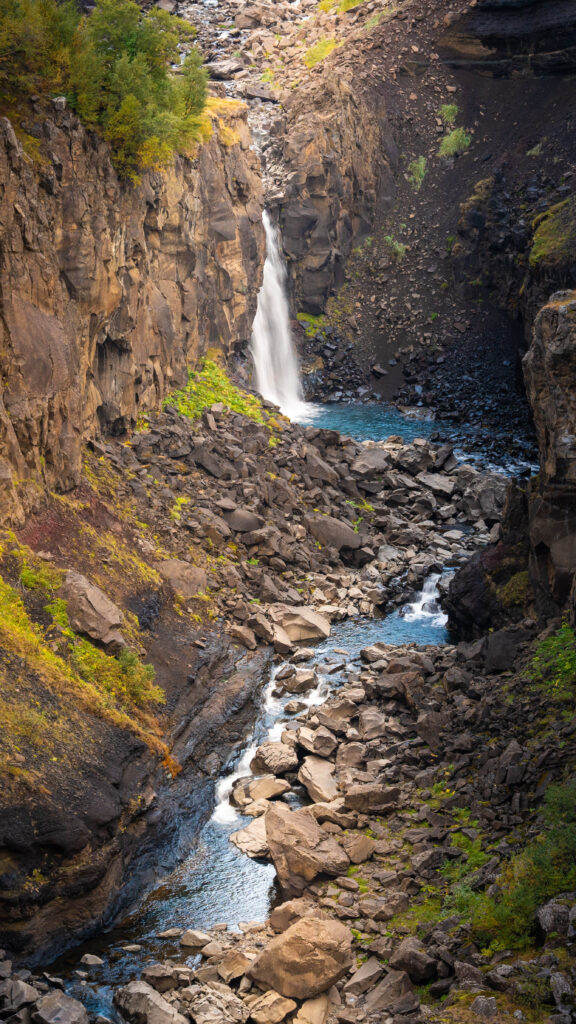
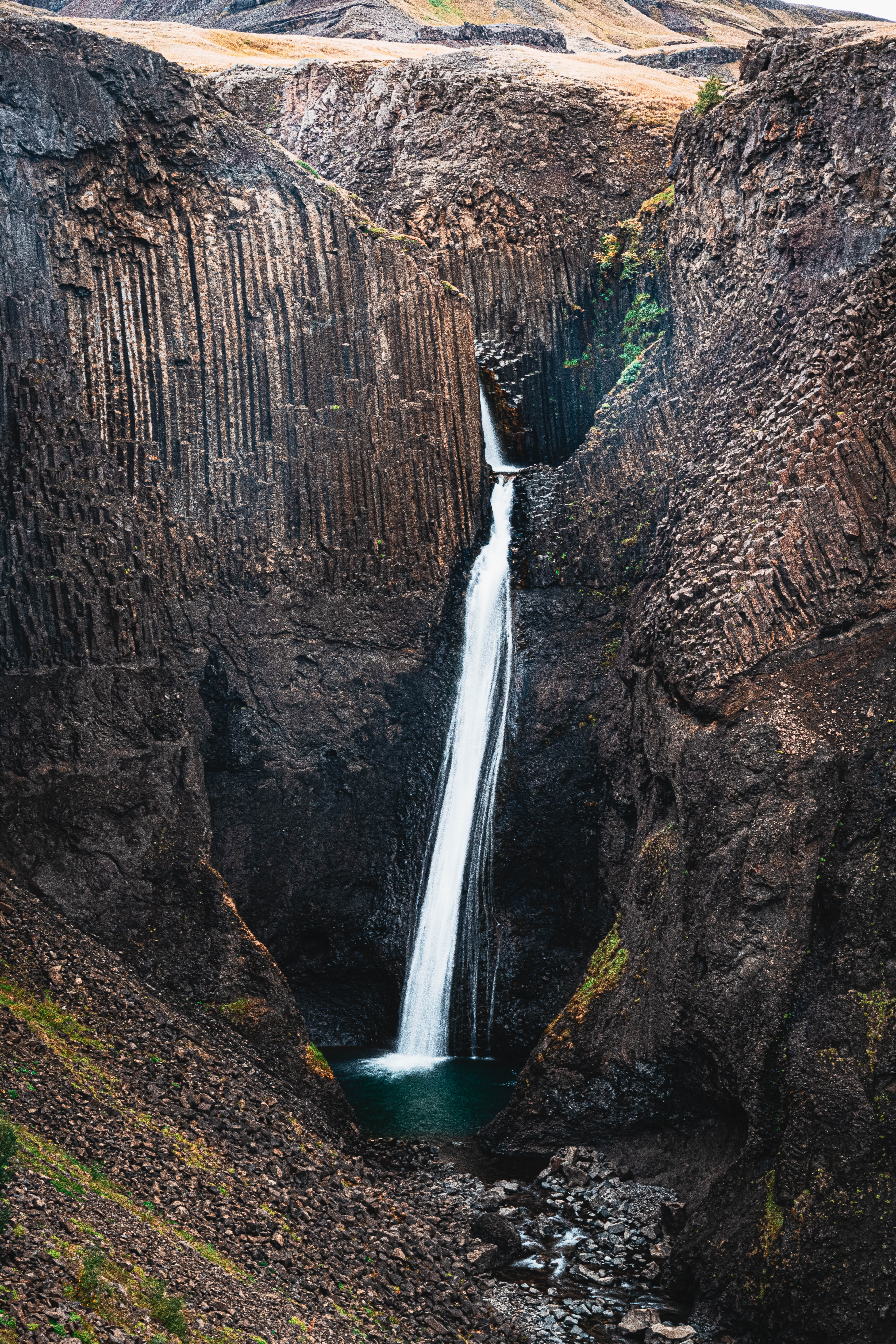
After the falls we decided to try and hit Diamond beach to photograph sunset. Alas there was no sunset, but the beach was still beautiful with its striking black-sand beach famed for the huge, glistening iceberg fragments that drift ashore. Right across from it, is the Jokulsarlon glacier lagoon. You want to time your trip in such a way that you do the boat tour in the day time to see the glaciers in this lagoon, which I had done my previous trip so we skipped this time.
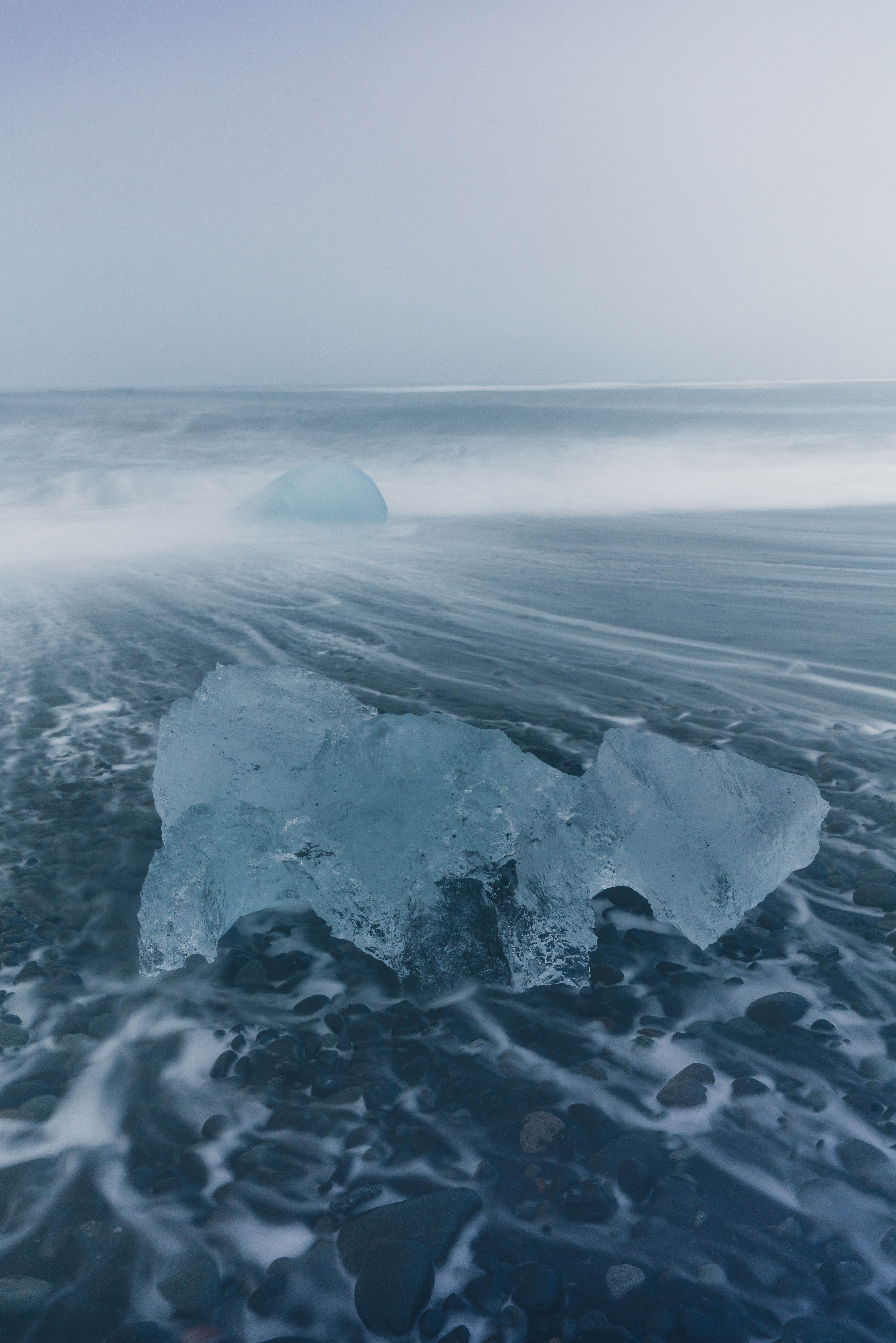
Fjadrarglijufur Canyon:
The next day we set out to visit a beautiful canyon. Hiking above the Fjadrargljufur canyon is something out of a movie! 100 meters deep and an incredible 2 kilometers long, Fjadrargljufur was created 2 million years ago at the end of the last Ice Age. At the parking lot, you will find some restrooms. They are frequently out of service, so try and make sure you go to the toilet before you set off on the journey. A 2-kilometer walk will take you to the most incredible views of a waterfall crashing right into the canyon. Please remember that the canyon is not always open to visitors. This is to protect the delicate ecosystem by allowing it time to recover. When the canyon is fenced off, you must respect the closure.
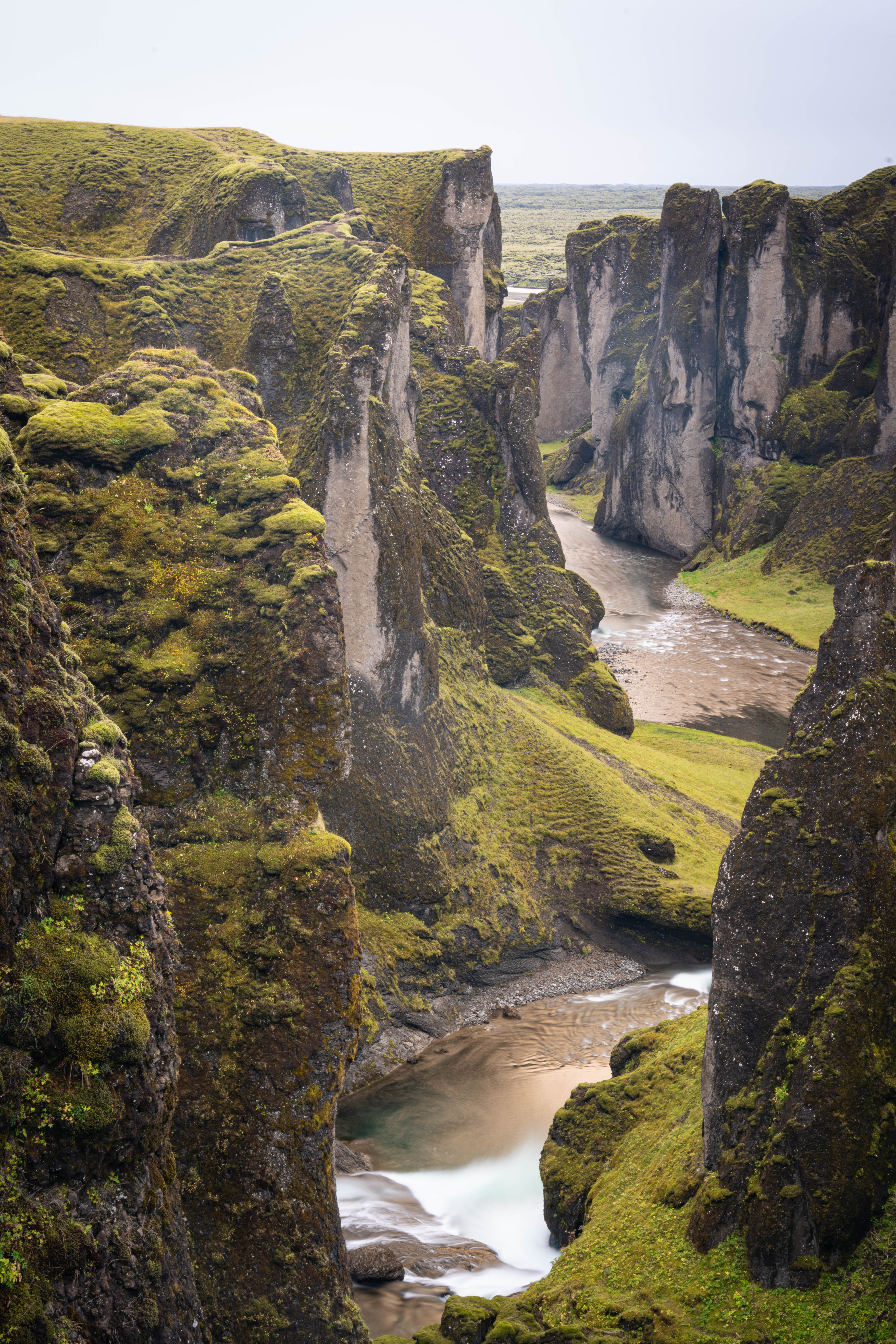
Skogafoss:
From the canyon we drove on to Skogafoss. We spent the night at a campsite nearby. Skógafoss is one of the biggest waterfalls in Iceland, with a drop of some 60 meters and a width of 25 meters, and you can walk right up to, but be prepared to be drenched. It is just overwhelming standing next to it. Tip: When you are photographing here with a professional camera make sure you get a waterproof sleeve as the mist will wet your lens. The best part was cooking and eating dinner with a view of these falls in the parking lot in our Iceland campervan rental.
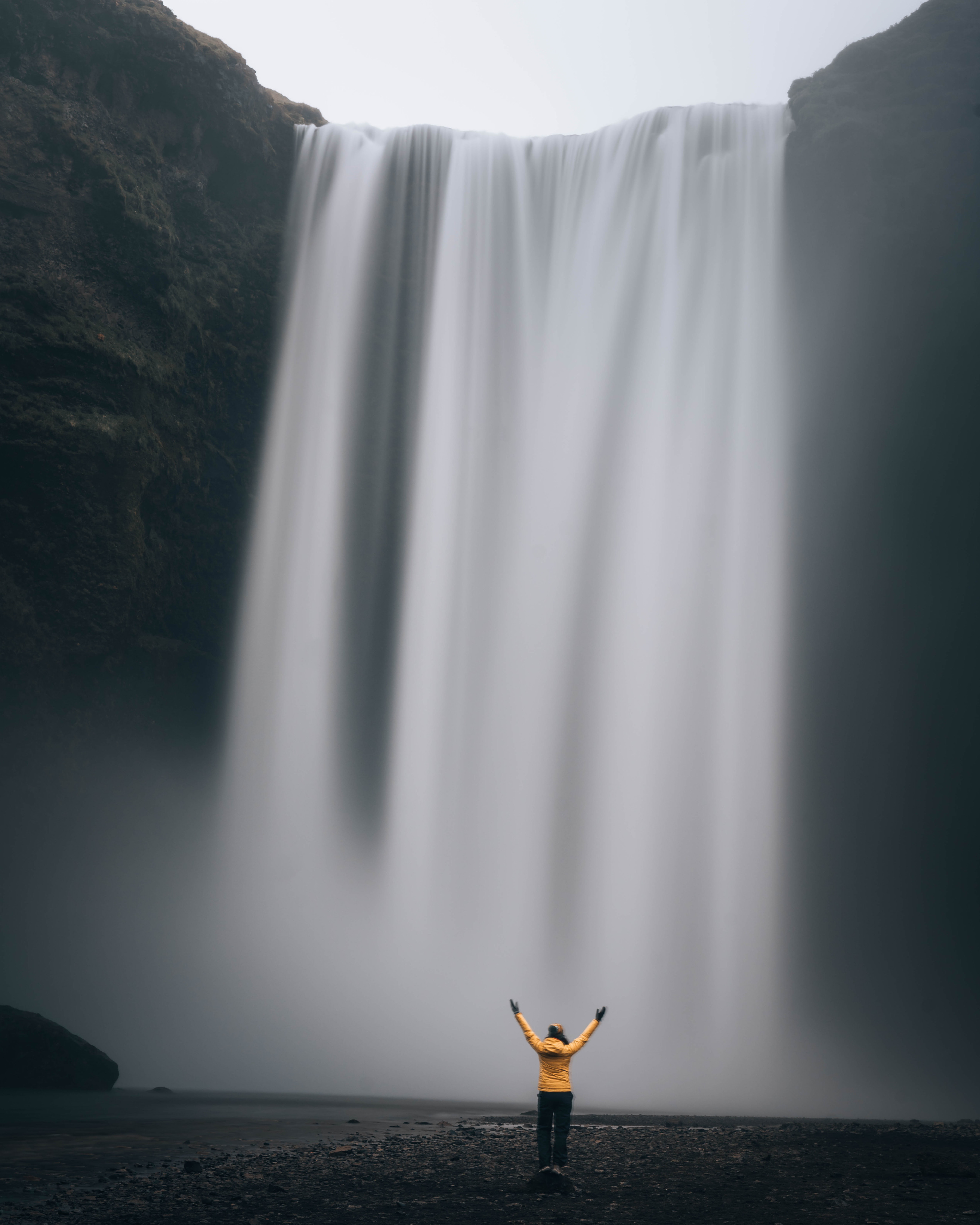
Katla Ice Cave:
Early morning we set out to meet our tour guide to the Katla Ice Cave. We parked next to the Skool Beans Cafe, which is a school bus that serves delicious breakfast, and hopped into our tour guide’s massive vehicle with monster snow tires. The ride is very scenic, through a ruggedly beautiful landscape with extraordinary contrasts. The pitch-black lava sand and the green mountains created a spectacular scene. Soon it was to become even more spectacular. In September, your tour guide will take you to the best ice caves that have formed so the exact area may vary. You will be asked to wear micro spikes so you can walk on the glacier. It’s super fun and easy. Tip: It can get super cold, and it may even snow, so layer up!
After the Ice cave tour we headed to Seljalandsfoss to capture sunset.
Seljalandsfoss
Not only is the waterfall captivating, but you can also walk behind it on an easily accessible walking trail. When you walk the path, you are actually walking around the waterfall—a kind of three-dimensional experience. The experience and feeling is magical and overwhelming all at once. Wear layers, you will get wet if you go behind the waterfall and if you are photographing sunset make sure you have you waterproof lens cover.
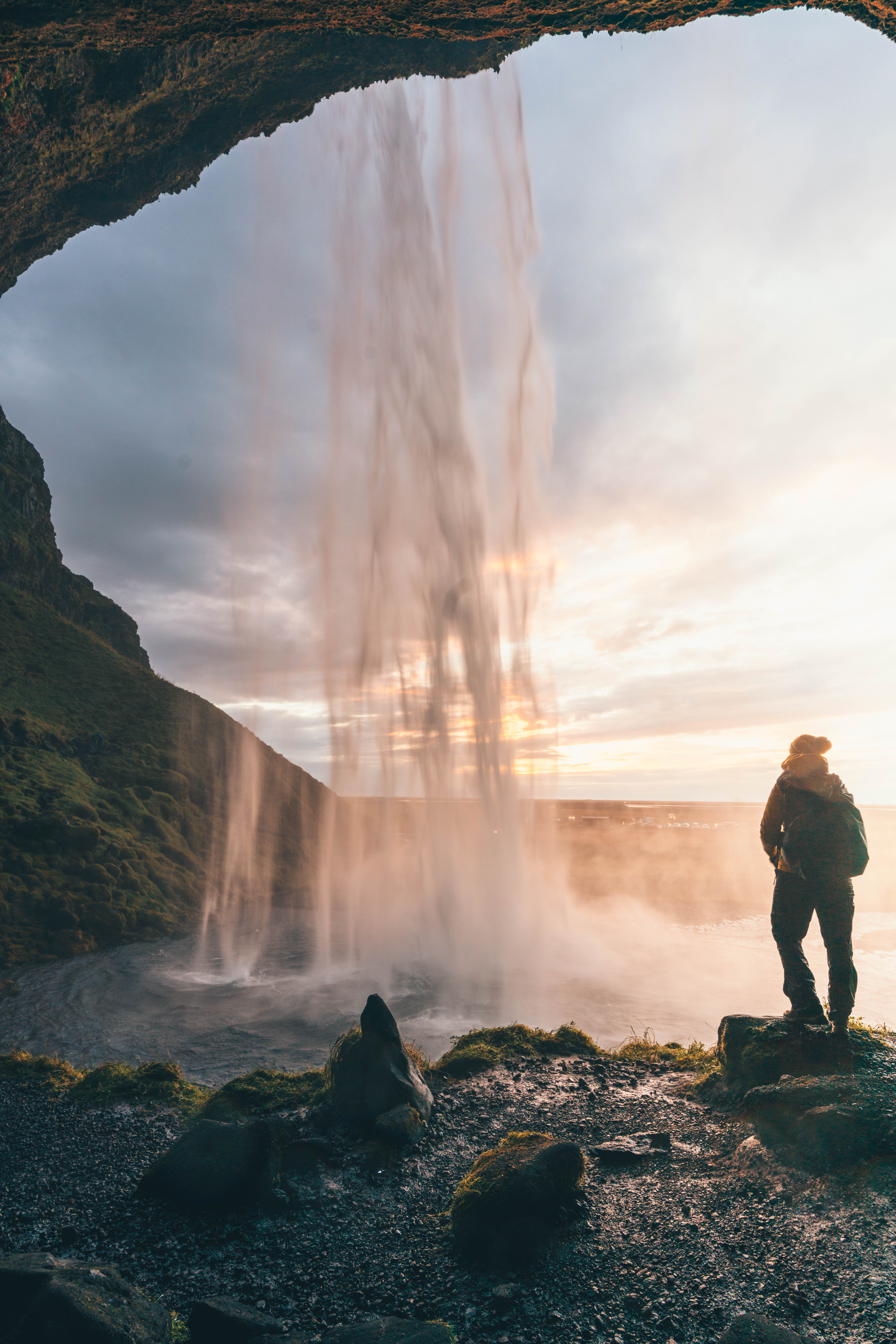
Vik Basalt Columns
The next day morning we decided to hang around the charming little town of Vik. It was raining and gloomy but we managed to make the best of it by visiting the cute church and then driving to the beach. From the parking lot it’s a short walk to the famous basalt columns. From the beach you can see three black basalt columns called the Reynisdrangar protrude from the stormy North Atlantic. Legend has it that the rocks are three trolls, caught out too late and frozen by the early morning sunlight. Tip: Don’t take the ocean here lightly, the waves and current are so strong that many have been swept out to sea.
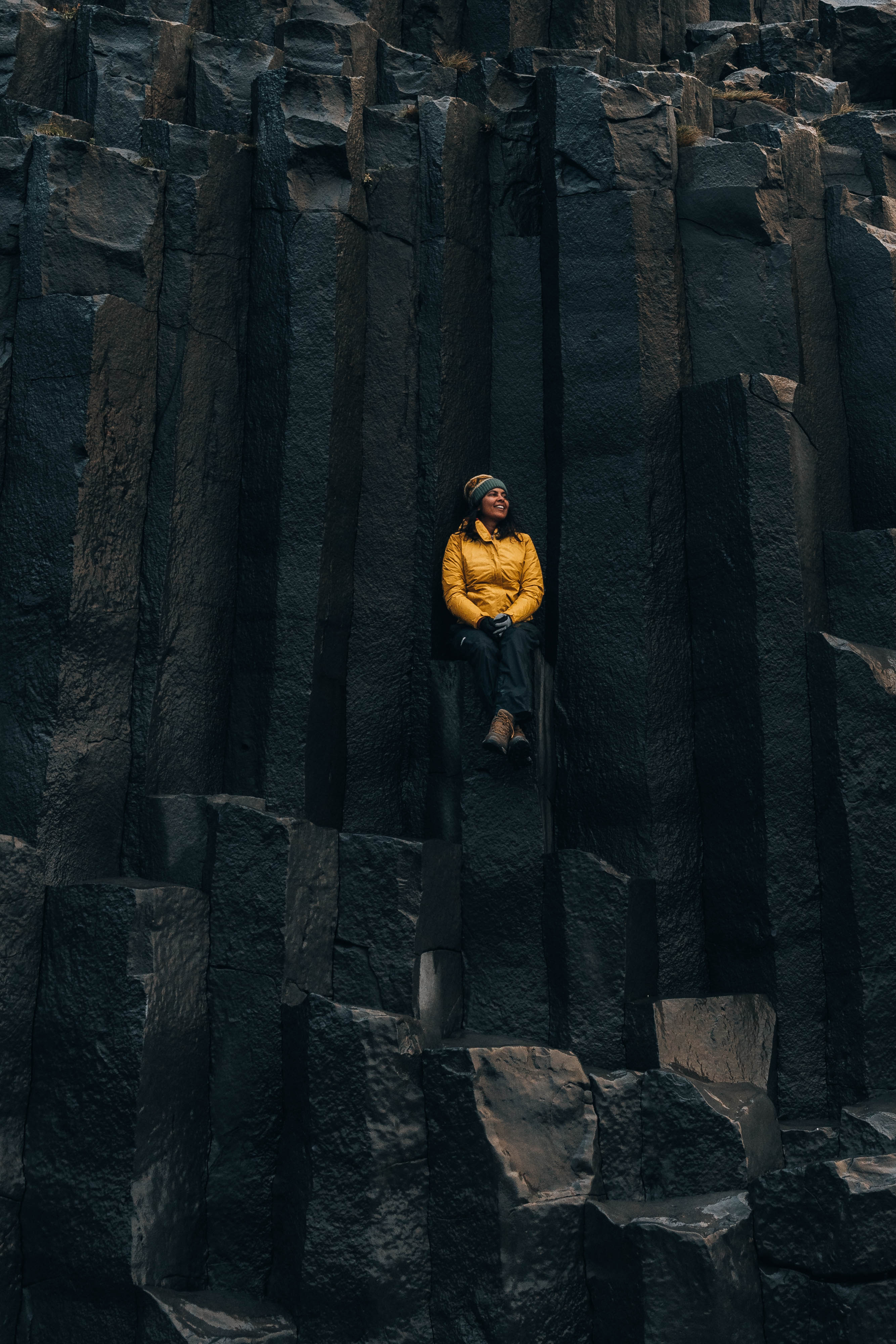
Solheimasandur
From here, we decided to go take a look at the abandoned DC plane on the black beach at Sólheimasandur. Do you like science fiction movies and want be in one (almost) ? If yes then visit here! In 1973 a United States Navy DC plane ran out of fuel and crashed on the black beach. Fortunately everyone survived! It is now a rather long walk to view these remains – 40 minutes to an hour ONE way.
Haifoss
On our last day in Iceland we decided we wanted an adventure. We had befriended a stranger (a guy named Michael traveling from Switzerland) at the Fjadrargljufur canyon. We kept in touch and he said he’d show us a must-see waterfall at some point during our trip. So on our last day we met up with him on the road to Haifoss. We came to a point where there was a water crossing and parked our Iceland campervan rental on the side of the road and jumped into his 4wd vehicle and set off to see Haifoss, located the edge of the highlands so you’ll need a 4wd. It was every bit as he’d described…rainbows and no crowds, we were the only ones hiking down into the canyon. Be prepared for wind and spectacular views. The hike back up is steep and can be extremely windy/cold.
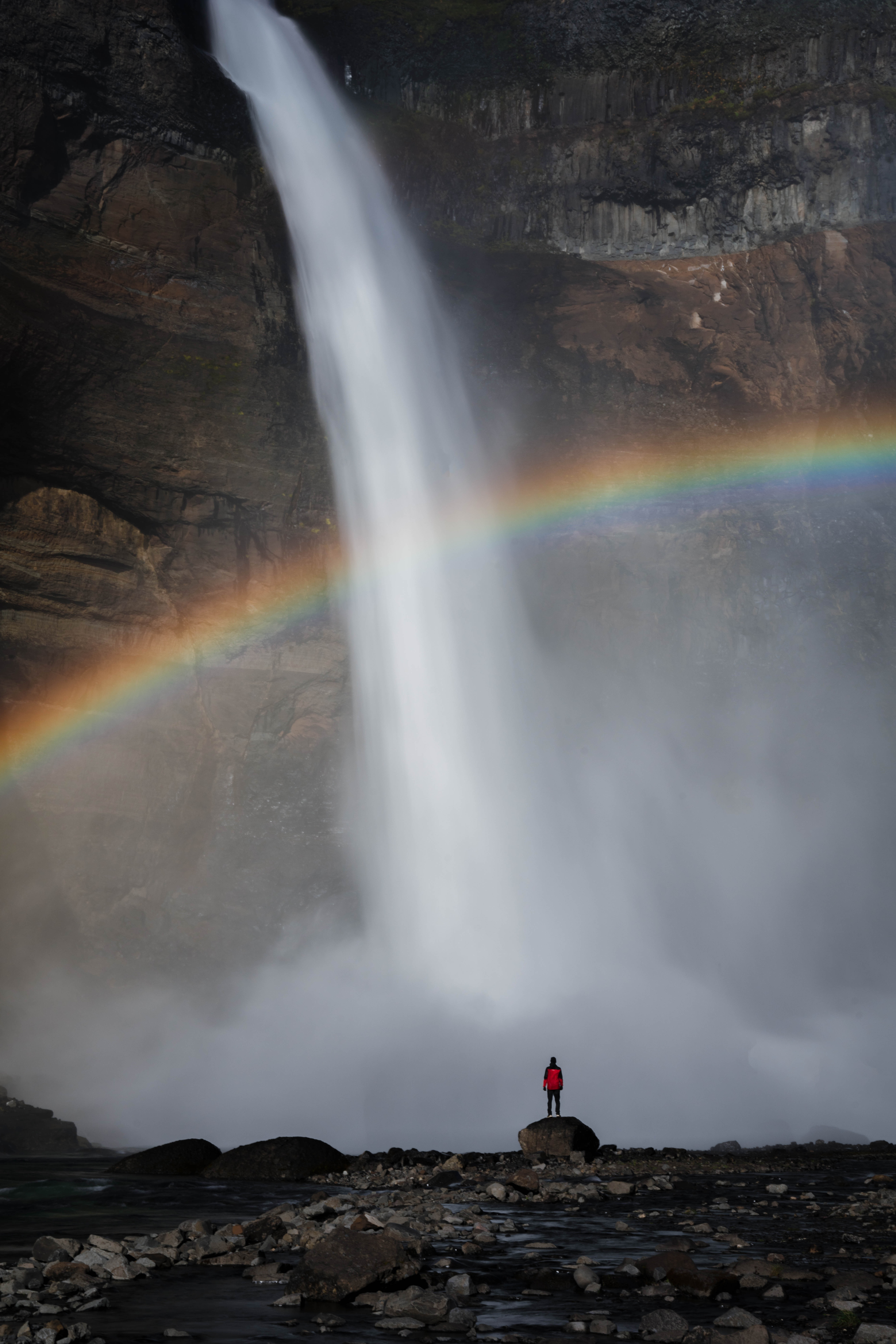
Volcano Eruptions
We were supposed to see the Fagradalsfjall volcano that had erupted and was active for 6 months. But right when I landed in Iceland, the day after, the volcano decided to go dormant! So we spent the last day just sleeping in and getting tested for Covid before our flight back home the next day!
Conclusion
My second trip back to this glorious country was more eye opening than my first time and much more immersive because not only was I photographing and chasing the light, but I saw the country from a different perspective – a campervan. I would highly recommend renting an Iceland campervan and driving around this country because it’s easy, convenient and liberating! Questions? You can leave a comment below or dm me on Instagram @eagertravele. Thanks for reading!
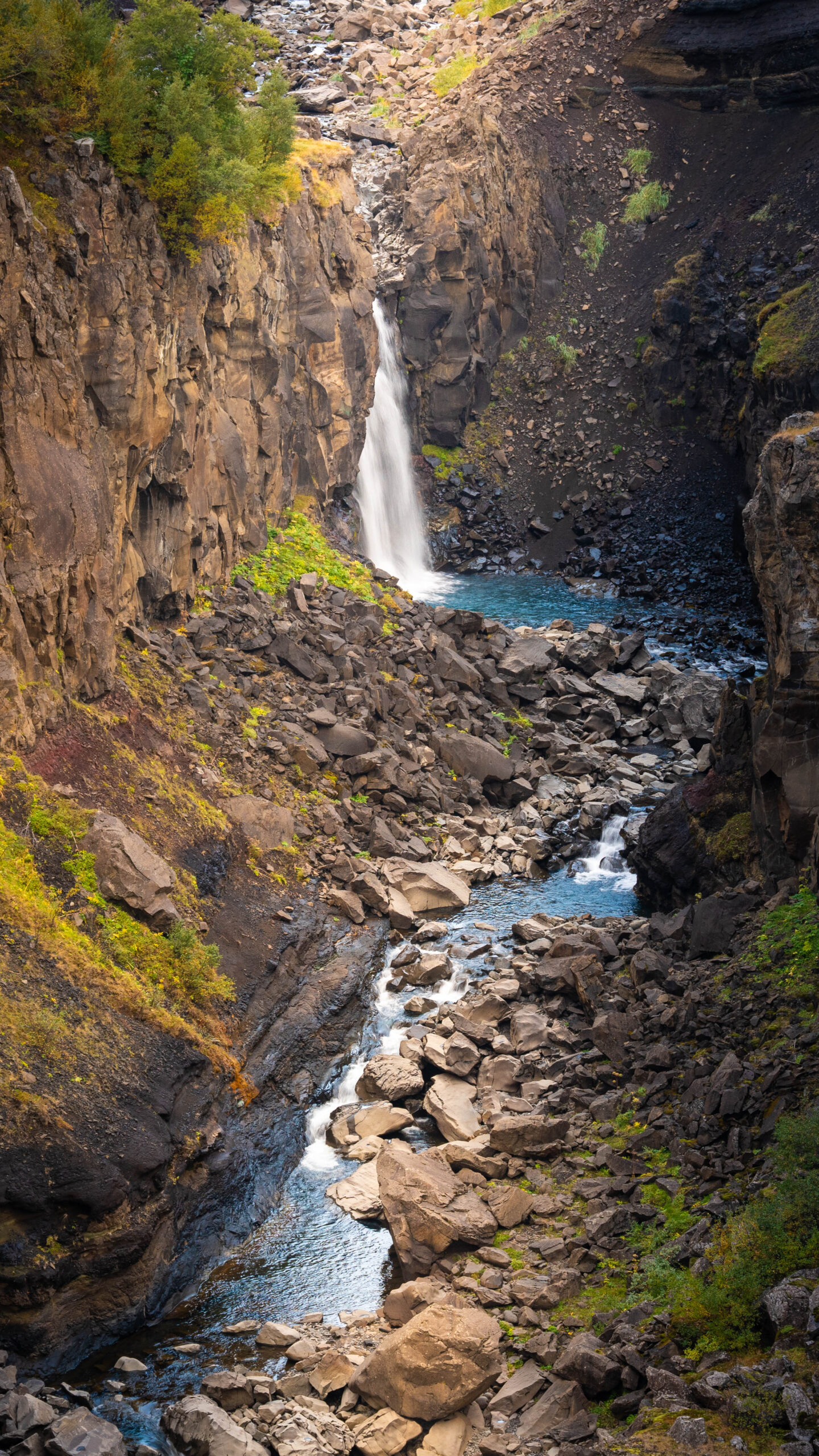
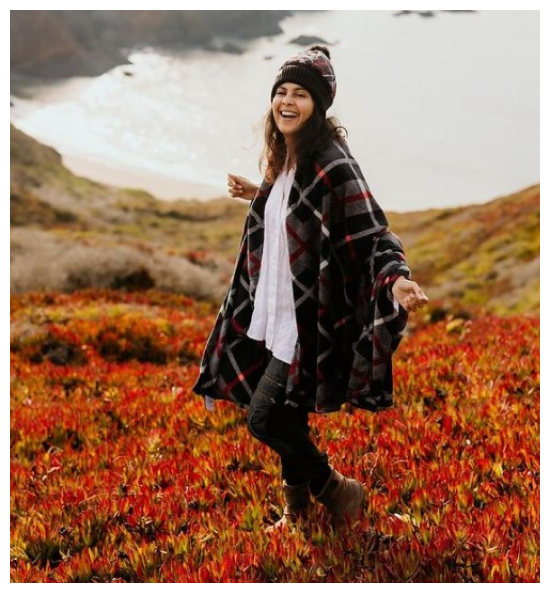
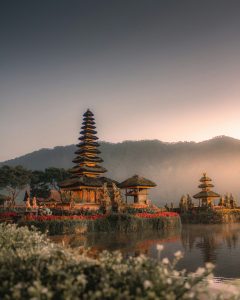
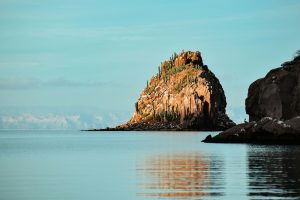
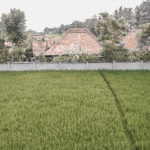


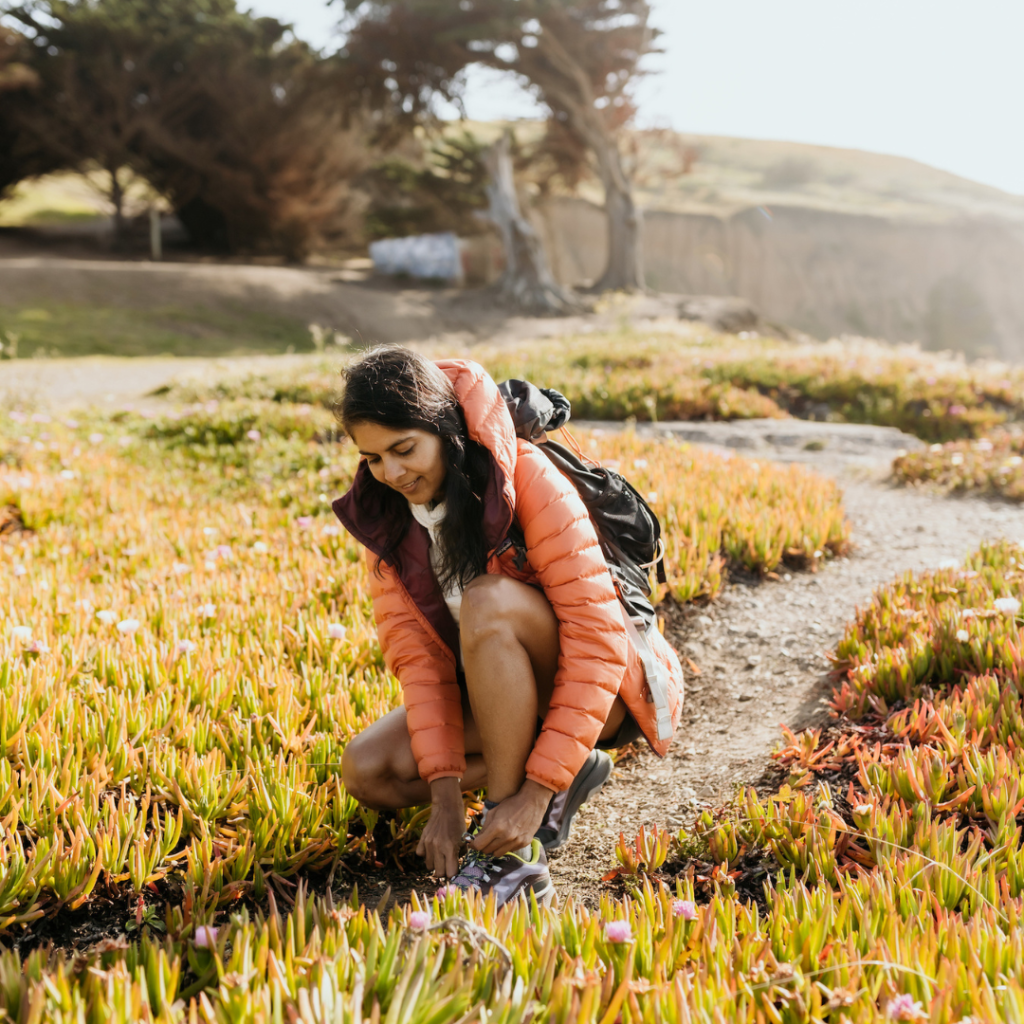
One Response